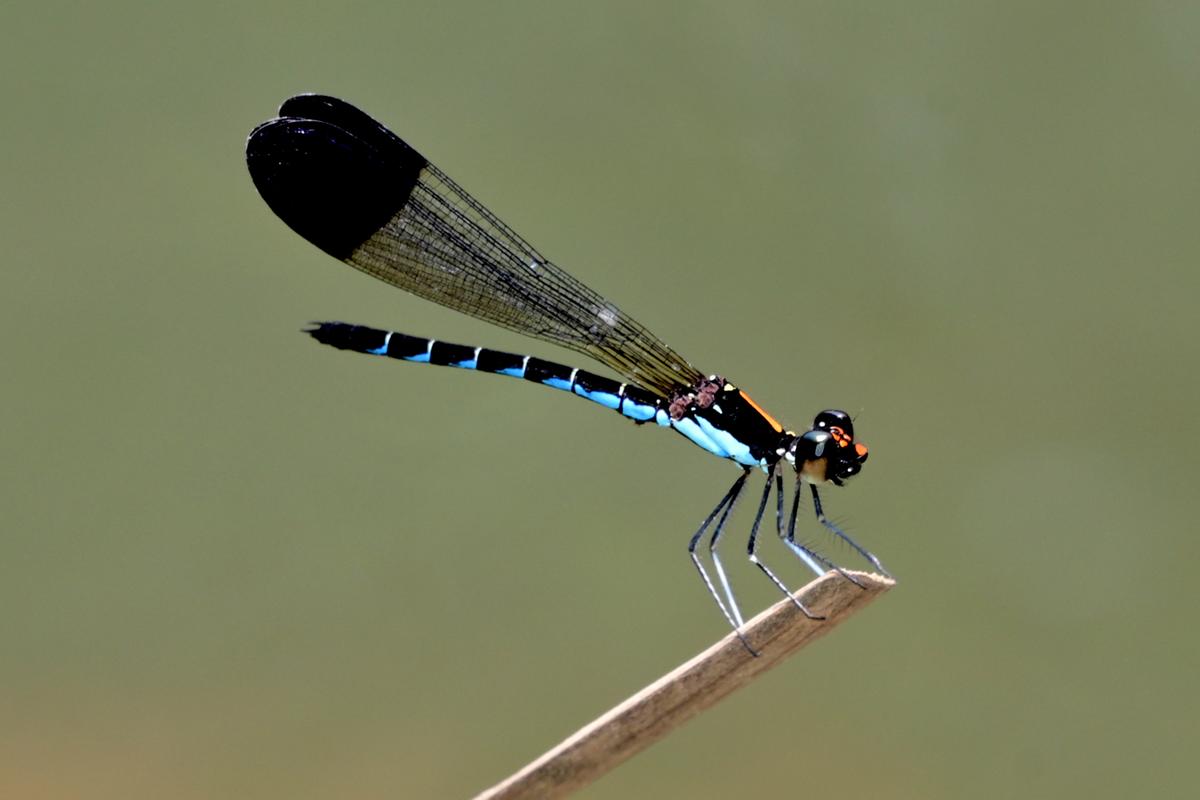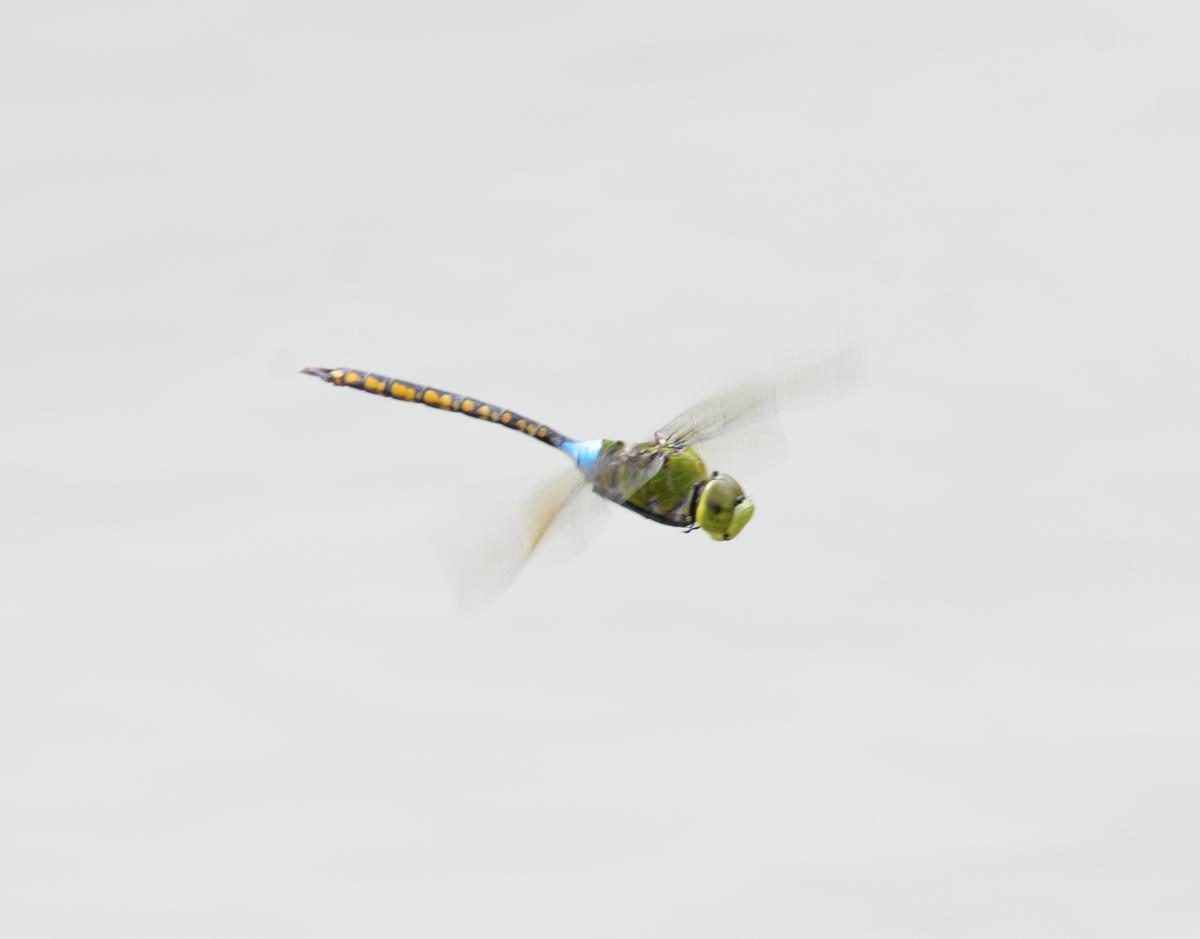Merogomphus aryanadensis (dainty longleg)
Five new species of dragonflies and damselflies were discovered in the latest survey of odonates held in Thiruvananthapuram wildlife division. The survey held from September 12 to 14 documented an impressive 121 species of dragonflies and damselflies.
The survey was jointly conducted by the Society for Odonate Studies and the Kerala Forests and Wildlife Department. “The study marked a major milestone in regional biodiversity studies,” said odonate expert Sujith V. Gopalan.
N. Syam Mohanlal, forest conservator, ABP circle, inaugurated the survey. S.V. Vinod, wildlife warden, flagged off the exercise. Two dozen volunteers took part in the survey guided by odonate experts like Dr. Gopalan, Vivek Chandran, Muhammed Sherif, Renjith Jacob Mathews and Reji Chandran.
The study took place across 10 strategically selected camps and adjoining habitats. “Camps were selected along an altitudinal gradient to encompass maximum habitat diversity and microhabitats within the division,” said Dr. Gopalan.

Calocypha laidlawi (Myristica sapphire)
As many as 73 species of dragonflies and 48 species of damselflies were recorded in the three-day assessment. They included the five species newly found in Thiruvananthapuram.
They are Merogomphus aryanadensis (dainty longleg), Protostictasanguinithorax (crimson reedtail), Anax indicus (lesser green emperor), Macromia bellicose (militant torrent hawk) and Lestes dorothea (forest spreadwing).
Among the new five, dainty longleg and crimson reedtail stood out as particularly noteworthy species, both having been described to science for the first time just last year.
The survey also brought forth several taxonomic updates, bringing local records in line with the latest scientific reclassifications.

Anax indicus (lesser green emperor)
Phylloneura westernmanni was updated as Phylloneura rupestris (cliffside bambootail), Melanoneura bilineata updated as Melanoneura agasthyamalaica (Agasthyamalai bambootail), and Lyriothemis flava redefined as Lyriothemis abrahami (Abraham’s bloodtail).
Some survey camps, like Anchunazhikathode documented over 46 species and sites like Pulininnakala and the nearby area documented 80 plus species, reflecting the pristine quality of the region’s ecosystems.
The study found a healthy population of stream-dwelling torrent darts, including Euphaea fraseri (Malabar torrent dart) and Euphaea cardinalis (Travancore torrent dart), as well as Myristica swamp specialists like Calocypha laidlawi (Myristica sapphire), a rare and striking damselfly endemic to this habitat.
The list also included shade-loving damselflies like Protosticta ponmudiensis (Travancore reedtail) and the recently described Protosticta armageddonia (armageddon reedtail), alongside bambootail species from the genera Esme and Caconeura.
Other charismatic regional endemics, including Epithemis mariae, Gomphidia kodaguensis, as well as species of Epophthalmia, Macromia, and Idionyx were also observed.
“The high number of endemic odonate species found in the survey points to the ecological richness and pristine nature of the region’s habitats,” said Dr. Gopalan.
Being highly sensitive to environmental change, odonates serve as critical indicators of ecosystem health, reflecting the quality of water systems and forest habitats.
Published – September 26, 2025 04:08 pm IST




